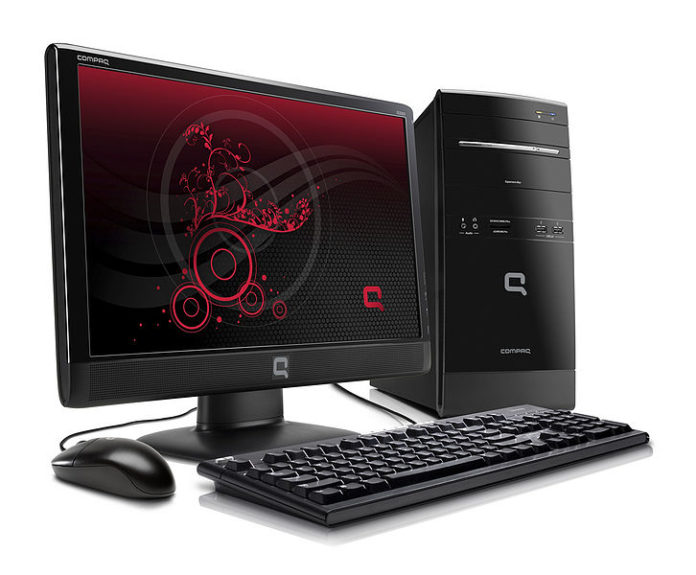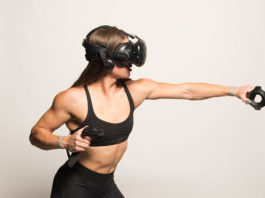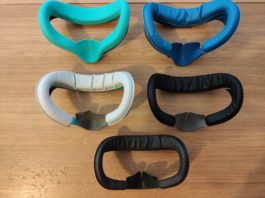It’s now possible to get into fantastic shape by doing nothing but playing the right set of games in VR. But how do you shop for the right gaming PC?
Anybody with limited hardware knowledge might think just any PC with a graphics card and a processor should do the trick for VR. Unfortunately, shopping for the best gaming computer that suits your budget isn’t always the easiest thing to do if you’re new to PC gaming.
At face value, there are some deals that seem too good to be true. Are they really as good as the store window (or webpage) says they are? Sometimes, yes, they are. But not always! To stay on the safe side, here are three ground rules that you should stick to when shopping for your VR-ready gaming PC.
Rule #1: Be cautious with laptops
To clarify: I’m not saying to never buy a laptop. There are affordable gaming laptops that can do fantastic things, but you’re paying nearly 150% as much to get the same discreet gaming performance out of a laptop that you’d expect from a desktop.
Let’s say that you’re shopping for a computer to hook your Oculus Rift into. You find the laptop of your dreams, and look! It costs $1,000—just like the desktop you wanted to build. Except, who has time to build a desktop when you can get a laptop? Hold on! Why would anybody buy a desktop at that price if they could simply get a laptop and go portable?
Well, there are some solid reasons why. For example, a laptop equipped with an Nvidia GTX 1070 cannot handle the same heat dissipation and power throughput as a well-built desktop that contains a similar GTX 1070. This is because laptops are designed to be compact and portable, resulting in very limited airflow.
As of September 2018, laptops also still run off of lithium batteries instead of dedicated power supply units. As a result, each of the parts in a laptop’s logic board needs to be deliberately slowed down at production, even if they’re the exact same parts you’d find in a desktop. And that’s for good reason.
You wouldn’t want your laptop to explode and cause serious damage to you or your home, and you also wouldn’t want your new laptop to burn out after a few short minutes.
TL;DR: Power-hungry components, such as the aforementioned GTX 1070, can’t receive the same amount of juice in a laptop as they would in a desktop. So, if you want a laptop that performs like a custom-built $1,000 desktop, you’re going to be reaching for a laptop that costs over $1,500-$2,000 or more.
Rule #2: Be cautious with pre-built systems
As with laptops, there’s a benefit to using pre-builts. A pre-built desktop is ready for you to plug in and use. Unfortunately, you’re rolling the dice when purchasing a gaming desktop that you didn’t build or have somebody else custom-build for you.
And here’s why: When pre-built PCs roll off of the factory line, they may or may not come with proprietary hardware that’s difficult or impossible to remove and replace.
Granted, that’s only the tip of the iceberg. Here are some additional issues you might run into with a pre-built system:
- They may or may not come with bloatware—useless, difficult to remove proprietary software that slows your entire system by always running in the background without your knowledge or permission.
- The BIOS may or may not be permanently locked. This means that you can’t replace or upgrade the operating system or tweak your system’s performance in the future.
- Retailers will sometimes price their pre-built systems higher than the market cost of each individual piece of hardware combined.
You may sometimes get lucky with a really good deal on a pre-built gaming PC. Some perks may include warranties and extended customer support for the entire machine, which can make the troubleshooting process much faster if one or more of your PC components begin to die.
Check out this piece from Windows Central on more pros and cons of pre-built gaming PCs, and check out this video from Linus Tech Tips for an example of a great retail gaming PC:
Rule #3: Only buy a Mac if VR support is incidental
Macs are fantastic for music producers, filmmakers, photographers and writers on the go. On the other hand, Macs still don’t have any competitive advantage in gaming. This is especially true for VR gaming, where your headset will demand extra high system specifications. It’s also unlikely that your Mac has sufficient USB, HDMI, and/or DisplayPort ports to run a VR headset.
If you’re already budgeting to deck out a Mac with the highest options offered, then you may have luck with SteamVR’s OSX integration. Otherwise, skip over the Mac when shopping for your VR-ready gaming PC.
Anybody complaining that their $1,000 pre-built desktop (or worse, their $1,000 laptop) isn’t very good for VR fitness games probably aren’t lying. You can usually cobble together a reliable gaming PC within your budget range—assuming that your budget is above $850—if you’re educated and aware of what you’re buying.
At a budget of less than $1,000 for a custom gaming PC, you can play the latest VR games for current-gen headsets at your preferred quality setting for at least two years, on the pessimistic side, without needing to upgrade anything. After this, all you’ll likely need to do is upgrade your GPU.
What’s the worst experience you’ve had while buying a gaming PC for VR? Let us know in the comments.




